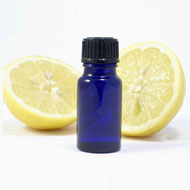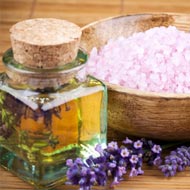- Aromatherapy Bath
- Aromatherapy Essential Oils
- Aromatherapy Compresses
- Aromatherapy Massage
- Aromatherapy Products
- Candles And Aromatherapy
- Carrier Oils For Aromatherapy
- Essential Oil Diffuser
- Home Fragrance Body Oils
- Synthetic Oil Additive
- Benefits of Oil Treatments
- Lavender Essential Oil
- Natural Stress And Depression Relief
- Benefits of Aromatherapy And History
- Aromatherapy Soy Candles Making
- Sunflower Oil
- Fragrance Oil
- Tea Tree Oil Uses
- Aromatherapy Essential Oils Uses - Lavender Essential Oil
- Health Benefits of Sandalwood Oil
- Organic Olive Oil
- Diffuser Oil
- Soy Wax Candles - Eco Friendly, Scented And Palm Wax Candles
- Natural Oils
- Organic Body, Massage And Vegetable Oils
- How to Make Reed Diffuser Oil At Home?
Aromatherapy Oil Diffuser And Blends
Aromatherapy uses essential oils therapeutically to improve our well being and mental health. Aromatherapy or essential oils are extracted from the different parts of plants such as leaves, bark, stems, flowers and even fruits.
These oils can be used alone or combined with others to have different effects and results on our overall health. Since it takes large quantities of plant material to produce a small amount of pure essential oil, aroma oils are quite expensive.
Luckily, only a few drops of oil can go a long way in the treatment of various ailments and illnesses. There are synthetic varieties of essential oils available but these are in no way as effective as the real deal. When it comes to using aroma oil, it is highly recommended that you do so only under the guidance of a trained aroma therapist. Side effects like rashes and burns are common if not used wisely and if you suffer from epilepsy or are pregnant, it is better not to dabble in aromatherapy at all.
Aromatherapy Oil Diffuser
One of the simplest ways to use aroma oils is with the help of an aromatherapy oil diffuser. There are several different types of diffusers available in the market today. When choosing a product, make sure that it comes from a reliable and trusted supplier (preferably of aromatherapy products and not cosmetic ones). Always check the safety rules and specifications of the product as well to avoid any untoward accidents. Basically diffusers work on the principle of activating the oil and spreading it around in the air. You then inhale the essential oil and it gets into your bloodstream via your lungs. Essential oil diffusers are available in the form of lamp ring diffusers, clay pot diffusers, candle diffusers, and fan diffusers. Fan diffusers are also known as aromatherapy electric oil diffusers. These come in a number of different shapes and sizes. What is does is essentially blow the aroma oils into the air. The oils have been placed into a tray or absorbent pad and when the fan blows across or over this pad / tray, the aroma oil is carried around the room. Electric diffusers are effective in large areas and rooms and are also portable. They are powered by electricity or batteries and can also be quite noisy. Aromatherapy electric oil diffusers can also use heat to disperse the essential oil. Thicker oils such as sandalwood may benefit from this type of diffuser method. Aromatherapy diffuser nebulizers are devices that actually break down the essential oils into smaller molecules before dispersing them into the air. It is believed that the body is more receptive to these smaller molecules thereby making the aroma oils more effective. A nebulizer consists of three parts - a pump, the tubing and a bottle or glass device that nebulizes the oils. Nebulizers run on electricity and can fill up an entire room with the aromatic oil in a few minutes.
In instances where aroma oils are used to treat respiratory or congestion problems, nebulizers are the most effective. Nebulizers should however, not be run indefinitely. It is best to switch them on for 15-minute sessions within a period of two hours. The rest period between the usage is important as the body should not get over-exposed to any aroma oil as this might lead to other complications. Keeping the glass portion of the aromatherapy diffuser nebulizer clean is also imperative as it can contribute to infections and illnesses if it remains clogged and dirty.
Aromatherapy Oil Blends
Aroma oils and their benefits all depend on the aromatherapy oil combinations used. An experienced aroma therapist will know how much of what oil to use and in what combination to provide the best results. Even on their own, aromatherapy oils are effective but many believe that combining two or more into different essential oil blends produces a stronger, more therapeutic product. When making your own aromatherapy oil blends, keep in mind that the best results come from mixing oils from the same group. For instance, keep floral oils with florals, citrus with citrus and woody oils with woody ones. Florals are the easiest to begin with if you are just trying your hand at aromatherapy oil blend recipes. The more difficult oils to mix are the spicy and citrus essential oils.
All oils can be split into three categories - of top, middle and base notes. Top notes are lighter and are used to uplift your mood and energize you. Top note oils include peppermint, cinnamon, and lemon oils. Middle note oils are weightier fragrances and are the main part of any aromatherapy oil combination. Lavender, nutmeg, and tea tree are prime example of middle note oils. Finally base note oils are the heaviest and last the longest such as vanilla, jasmine and ginger. As you learn how to blend essential oils, you will soon master the art of mixing them into a potent fragrance. It is best to blend all oils in a ratio of 3:2:1 i.e. 3 parts top note oils, 2 parts middle note oils to 1 part base note oil. Blending all three types will lead create a balanced perfumed aroma oil. Half the fun in trying out your own essential oil blend recipes is coming up with new and exciting fragrances to match your personal taste.



